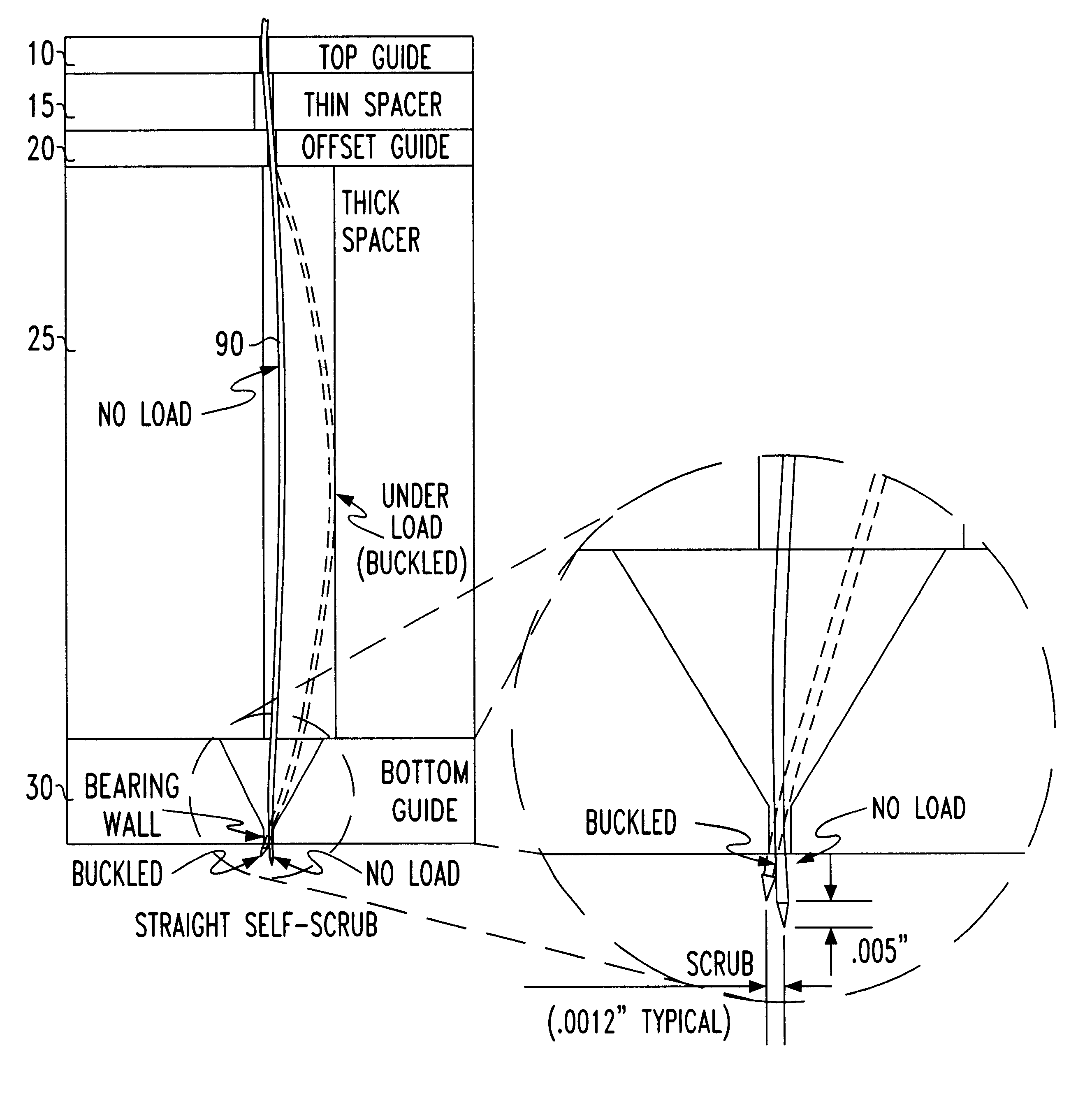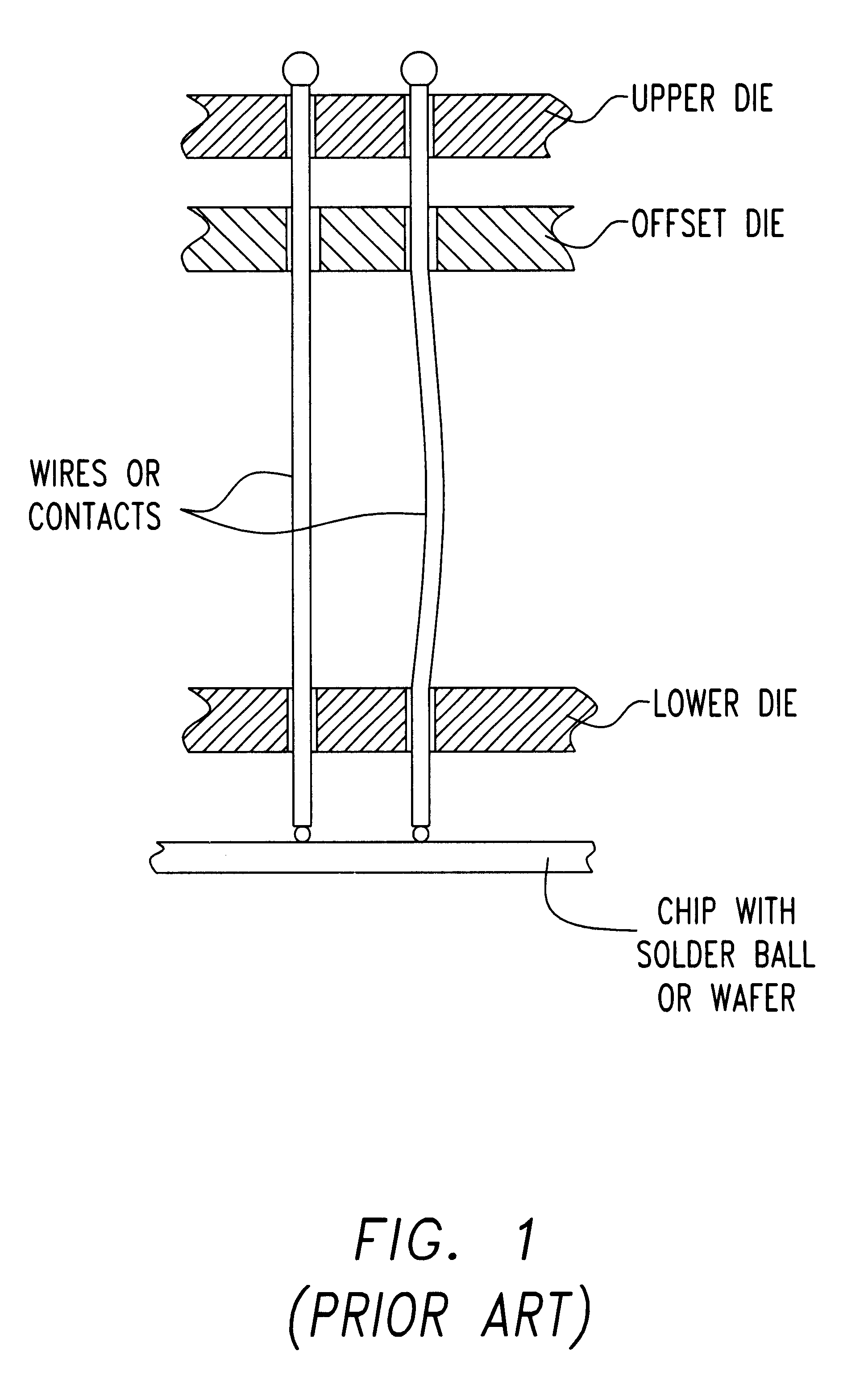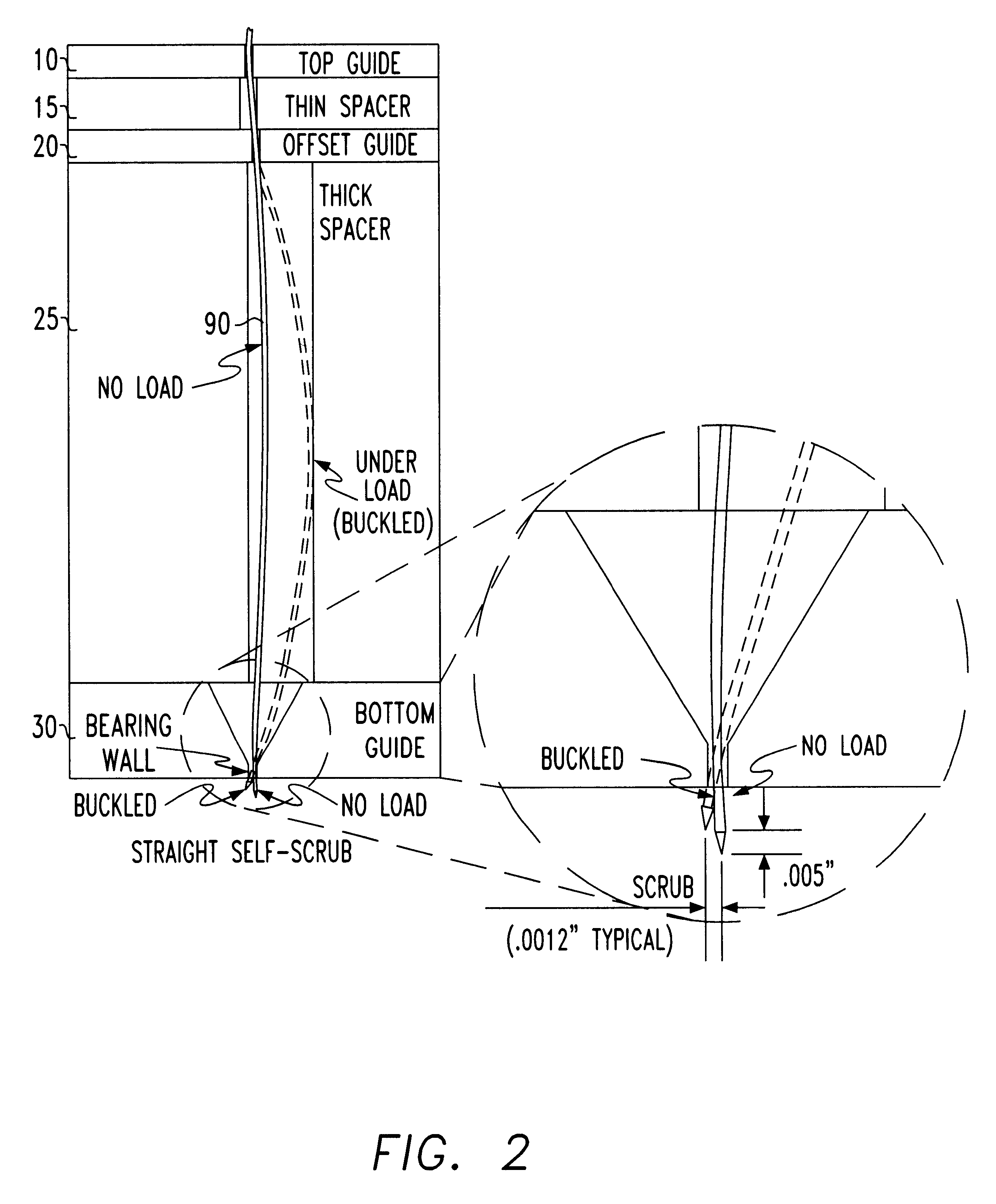Self-scrub buckling beam probe
a beam probe and self-scrubbing technology, applied in the direction of coupling device details, coupling device connection, instruments, etc., can solve the problems of destroying the pad altogether, difficult to design probes with more than one layer, and difficult to physically position them without, so as to reduce the resistance and prevent contaminants
- Summary
- Abstract
- Description
- Claims
- Application Information
AI Technical Summary
Benefits of technology
Problems solved by technology
Method used
Image
Examples
Embodiment Construction
Referring now to the drawings, and more particularly to FIG. 2, there is shown a side view of a straight self-scrub buckling beam and an exploded view of its tip, in accordance with the invention. The beam is shown both, in a no load state as well as under compressive stress, to be referred hereinafter as a buckled beam.
An array of electrically conductive contacts made of thin straight wires 90 are held by three insulated guide plates. These are: a top guide plate (or die) 10, an offset guide plate 20 and a bottom guide plate 30. The guide plates are typically provided with an array of round holes having the same pitch as the footprint of the Device under Test (DUT). The diameter of the holes is slightly larger than those of the probe to allow a vertical displacement under load. The offset guide 20 hole pattern is offset by dowel pins in a predetermined direction, normally a few thousandths of an inch, in order to force the beam to buckle in a set direction. The guide plates are sep...
PUM
 Login to View More
Login to View More Abstract
Description
Claims
Application Information
 Login to View More
Login to View More - R&D
- Intellectual Property
- Life Sciences
- Materials
- Tech Scout
- Unparalleled Data Quality
- Higher Quality Content
- 60% Fewer Hallucinations
Browse by: Latest US Patents, China's latest patents, Technical Efficacy Thesaurus, Application Domain, Technology Topic, Popular Technical Reports.
© 2025 PatSnap. All rights reserved.Legal|Privacy policy|Modern Slavery Act Transparency Statement|Sitemap|About US| Contact US: help@patsnap.com



